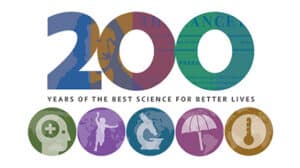Feeling a sense of safety from criminal activities is linked to a 9 percent reduced chance of early mortality and a 6 percent lower probability of experiencing a heart attack
Having a sense of protection against crime can lead to a 9% decrease in the risk of premature mortality and a 6% decrease in the likelihood of experiencing a heart attack, a new study presented at the ESC Congress 2023 suggests.
The study, conducted with a sample of over 35,000 adults, highlights the significant impact that one’s sense of security has on cardiovascular health.
The author of the study, Dr. Mengya Li from the National Center for Cardiovascular Diseases in Beijing, China, emphasized the connection between the environment we live in and our overall health.
“There is increasing evidence that the neighborhood we live in affects our health,” Dr. Li stated.
The study utilized the Area Environment Walkability Scale (NEWS), a questionnaire administered by trained researchers, to gather data on various aspects of the area environment. The questionnaire consisted of eight subscales, each addressing different aspects of the neighborhood environment that influence residents’ perceptions of safety and quality of life.
The subscales covered a range of factors, including ease of walking to amenities, distance between intersections, infrastructure for walking and cycling, aesthetics, safety from traffic and crime, and community satisfaction. Participants’ responses were used to calculate an overall score that indicated their perceptions of the neighborhood.
Over the follow-up period, the researchers tracked outcomes such as all-cause death, death due to cardiovascular disease (CVD), major CVD events (including non-fatal heart attacks and strokes), myocardial infarction (heart attack), stroke, and heart failure. The study controlled for various factors that could influence the relationships, including age, sex, education, lifestyle habits, and medical history.
Among the various subscales, safety from crime stood out as having the strongest association with health outcomes. A higher score in this category was linked to a 9% lower risk of death, a 10% lower risk of death from CVD, a 3% lower risk of major CVD events, a 6% lower risk of heart attack, and a 10% lower risk of heart failure.
In addition to safety from crime, a high score on the subscale measuring the time it takes to walk to essential amenities was associated with a 1% lower risk of death due to CVD, major CVD events, and heart attack.
Dr Li emphasized the potential impact of these findings on public health policy. “While some of the percentage reductions in risk are small, they affect large numbers of people and therefore could have a wide-ranging impact,” he said. He suggested that policymakers should consider interventions such as improving local amenities, enhancing transportation connectivity, providing green spaces and adequate street lighting, and developing walking and cycling paths to promote community well-being and cardiovascular health.
Also Read : Want a healthy heart? Walk for 5 minutes every half hour


















Add Comment